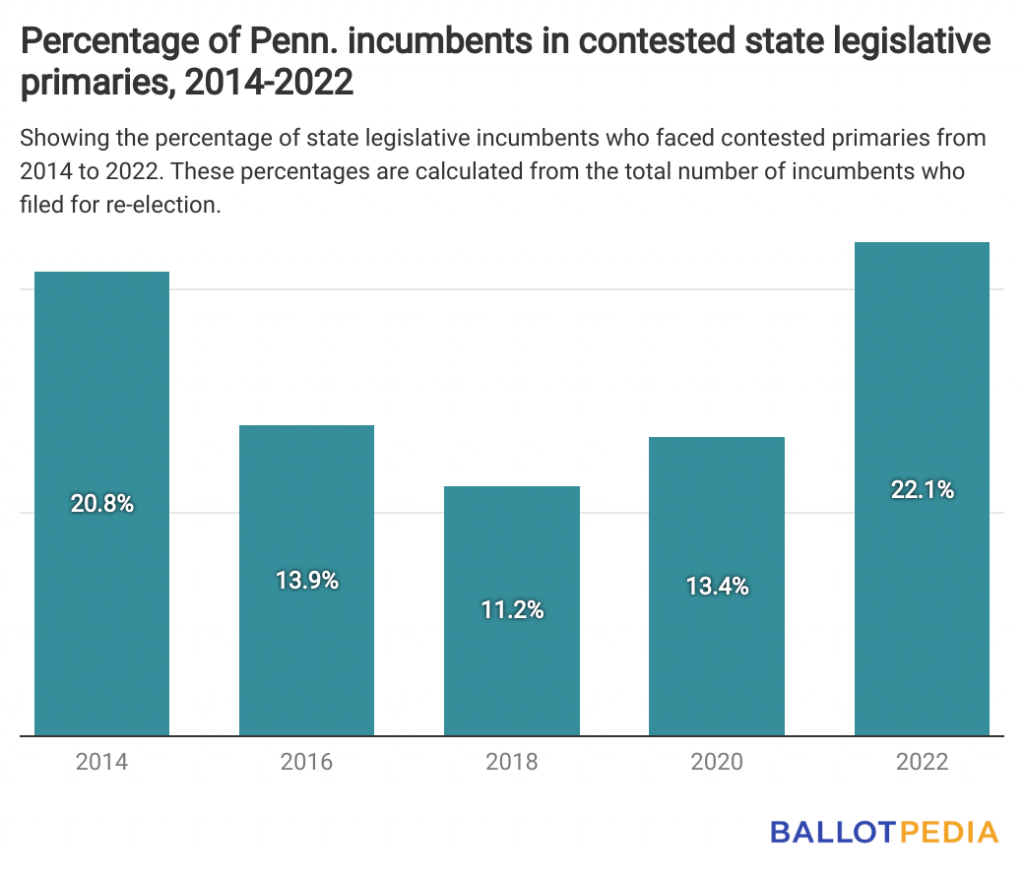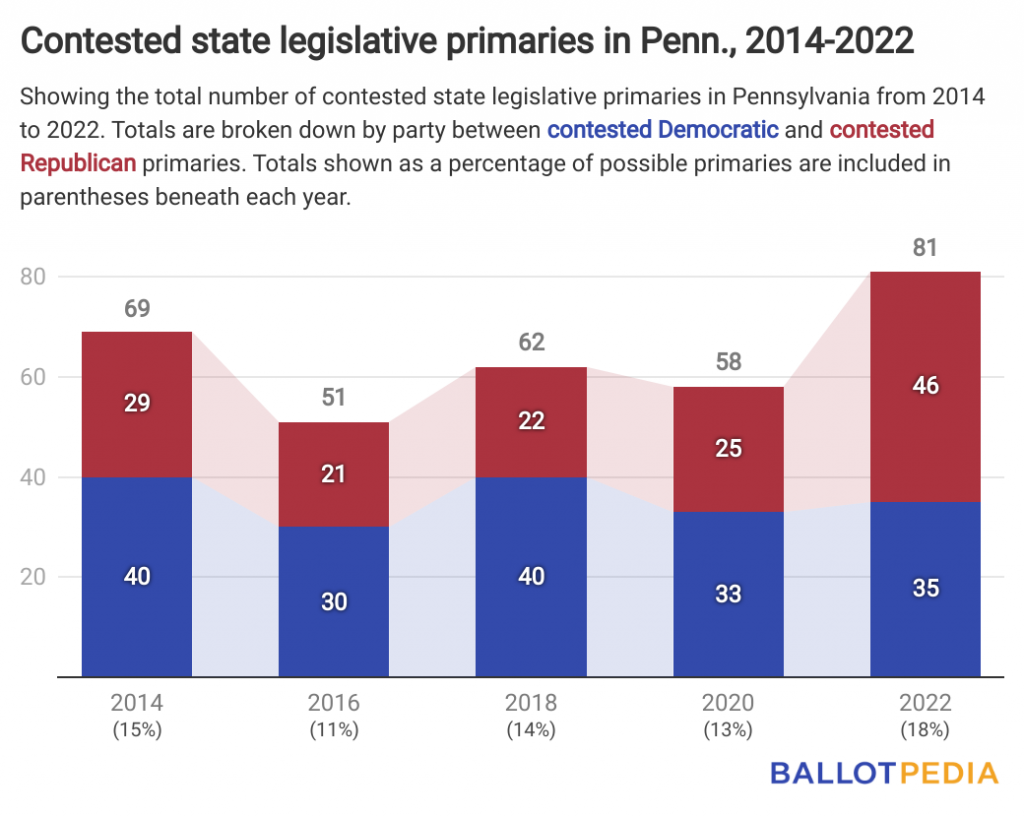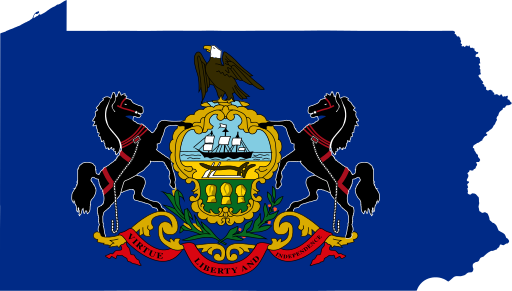Forty-two of the 190 Pennsylvania state legislators running for re-election this year—20 Democrats and 22 Republicans—face contested primaries. That equals 22% of incumbents seeking re-election, the highest rate since 2014. The remaining 78% of incumbents are not facing primary challengers.

A contested primary is one where more candidates are running than there are nominations available. After redistricting, it is common to see primaries where two incumbents run against one another. This can happen if a district's lines are redrawn to place two incumbents in the same district.
This year, there are three incumbent versus incumbent primaries in Pennsylvania. In these races, since only one candidate can win the nomination, one incumbent is guaranteed to lose:
- House District 86: Rep. Johnathan Hershey (R), from House District 82, filed to run against Rep. Perry Stambaugh (R).
- House District 187: Rep. Ryan Mackenzie (R), from House District 134, filed to run against Rep. Gary Day (R).
- House District 200: Rep. Isabella Fitzgerald (D), from House District 203, filed to run against Rep. Christopher Rabb (R).
The total number of contested primaries—including those without incumbents—also reached its highest point since 2014. With 228 districts, there are 456 possible primaries every election cycle.
This year, 81 districts (18%) are contested: 35 Democratic primaries and 46 for Republicans. For Democrats, this is up from 33 in 2020, a 6% increase. For Republicans, the number increased 84% from 25 primaries last cycle.

The filing deadline for candidates running for state legislative office in Pennsylvania this year was March 28. Candidates filed to run for all of the state's 203 House districts and 25 of its 50 Senate districts.
Forty of those districts were left open, meaning no incumbents filed to run, the most since 2014.
Overall, 454 major party candidates filed to run this year: 207 Democrats and 247 Republicans. That's 2.0 candidates per district, the same as in 2020.
Pennsylvania has been a divided government since voters elected Gov. Tom Wolf (D) in 2014. Republicans currently hold a 28-20-1 majority in the Senate and a 113-90 majority in the House.
Pennsylvania's state legislative primaries are scheduled for May 17, making them the sixth in the nation.
Additional reading:


